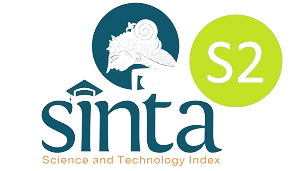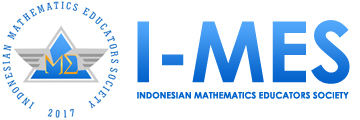Prospective Teachers' Perspective on the Role of Instructor in Fostering Their Mathematical Disposition
DOI:
https://doi.org/10.29408/jel.v7i2.3269Keywords:
content analysis, mathematical disposition, prospective teacher, role of instructors’Abstract
Continuous treatment is needed in developing mathematical dispositions. Even at the higher education level, some prospective teachers still need proper treatment in developing their mathematical dispositions. This study tries to reveal instructors' role in fostering their students' mathematical disposition to better didactical situations. This study is qualitative research with a content analysis approach. The results obtained in this study indicate that the instructor's role is still needed in the classroom regardless of the students' mathematical disposition. Instructors ' expected learning role becomes diverse based on the mathematical disposition grouping between good, moderate, and less mathematical dispositions. For prospective teachers who have an excellent mathematical disposition, the instructor's role is to confirm a theorem, confirm answers to questions, and the benefits of contextual topics. For prospective teachers who have a satisfactory mathematical disposition, the instructor's role is to motivate, direct the learning, and keep the classroom conductivity. Whereas for prospective teachers deficient in mathematical disposition, the instructor's role is needed as a direct learning source, structured learning director, and an enjoyable learning rhythm.References
Ab, J. S. (2020). Self-regulated learning: Intelligence quotient and mathematical disposition. Journal of Physics: Conference Series, 1422(1), 012020. https://doi.org/10.1088/1742-6596/1422/1/012020.
Ab, J. S., Margono, G., & Rahayu, W. (2019). The logical thinking ability: Mathematical disposition and self-regulated learning. Journal of Physics: Conference Series, 1155(1), 012092. https://doi.org/10.1088/1742-6596/1155/1/012092.
Andrews, J. D. (1984). Discovery and expository learning compared: Their effects on independent and dependent students. The Journal of Educational Research, 78(2), 80-89. https://doi.org/10.1080/00220671.1984.10885578.
Ausubel, D. P. (1968). Educational psychology: A cognitive view. New York: Holt, Rinehart & Winston. https://doi.org/10.1080/00461526809528961.
Bornstein, M., Jager, J., & Steinberg, L. (2012). Adolescents, parents, friends/peers: A relationships model (with commentary and illustrations). In I. Weiner, R. Lerner, M. Easterbrooks, & J. Mistry (Eds.), Handbook of psychology: Vol. 6. Developmental psychology (2nd ed., pp. 393–433). New York, NY: Wiley.
Bos, A. E., Muris, P., Mulkens, S., & Schaalma, H. P. (2006). Changing self-esteem in children and adolescents: A roadmap for future interventions. Netherlands Journal of Psychology, 62(1), 26-33. https://doi.org/10.1007/BF03061048.
Brooks, J., & Brooks, M. (1993). In search of understanding: the case for constructivist classrooms, ASCD. NDT Resource Center database.
Buss, D. M., & Craik, K. H. (1983). The act frequency approach to personality. Psychological Review, 90(2), 105. https://doi.org/10.1037/0033-295X.90.2.105.
Charmaz, K. (2006). Constructing grounded theory: A practical guide through qualitative analysis. London, UK: Sage Publications Inc.
Collinson, V. (1996). Becoming an exemplary teacher: Integrating professional, interpersonal, and intrapersonal knowledge. Paper presented at The Annual Meeting of The Japan-United States Teacher Education Consortium, Naruto, Japan.
Dale, C. (2010). Dispositions in Pre-service Teacher Preparation. Eastern Education Journal. 39(1). 3-12.
De Corte, E., Verschaffel, L., & Op't Eynde, P. (2000). Self-regulation: A characteristic and a goal of mathematics education. In Handbook of self-regulation (pp. 687-726). https://doi.org/10.1016/B978-012109890-2/50050-0.
Froyd, J., & Simpson, N. (2008, August). Student-centered learning addressing faculty questions about student-centered learning. In Course, Curriculum, Labor, and Improvement Conference, Washington DC (Vol. 30, No. 11, pp. 1-11).
Gandhi, S. (2010). Self-Confidence – An Asset to All Humans. Journal of School Social Work, 6(11), 8-10.
Glaser, B. G. (1978). Theoretical sensitivity. Mill Valley, CA, USA: Sociology Press.
Glaser, B. G. (1992). Discovery of grounded theory. Chicago, IL, USA: Aldine.
Glaser, B. G., & Strauss, A. L. (1967). The discovery of grounded theory: Strategies for qualitative research. Aldine Transaction: A Division of Transaction Publishers, New Brunswick, NJ, USA.
Gruber, T., Reppel, A., & Voss, R. (2010). Understanding the characteristics of effective professors: The student's perspective. Journal of Marketing for Higher Education, 20(2), 175-190. https://doi.org/10.1080/08841241.2010.526356.
Handelsman, J., Ebert-May, D., Beichner, R., Bruns, P., Chang, A., DeHaan, R., ... & Wood, W. B. (2004). Scientific teaching. Science, 304(5670), 521-522. https://doi.org/10.1126/science.1096022.
Harel, G. (2008a). What is mathematics? A pedagogical answer to a philosophical question. Proof and other dilemmas: Mathematics and philosophy, ZDM, 265-290.
Harel, G. (2008b). DNR perspective on mathematics curriculum and instruction, Part I: focus on proving. ZDM, 40(3), 487-500. https://doi.org/10.1007/s11858-008-0104-1.
Honebein, P. C. (1996). Seven goals for the design of constructivist learning environments. Constructivist learning environments: Case studies in instructional design, 11-24.
Katz, L. & Raths, J. (1986). Dispositional goals for teacher education: Problems of identification and assessment. Paper presented at The Twenty-third World Assembly of the International Council on Education for Teaching, Kingston, Jamaica.
Knodel, J. (1993). The design and analysis of focus group studies: A practical approach. In D. Morgan (Ed.), Successful focus groups: Advancing the state of the art (pp. 35–50). Thousand Oaks, CA: Sage. https://doi.org/10.4135/9781483349008.n3.
Leech, N. L., & Onwuegbuzie, A. J. (2007). An array of qualitative data analysis tools: A call for data analysis triangulation. School Psychology Quarterly, 22, 557– 584. https://doi.org/10.1037/1045-3830.22.4.557.
Leech, N. L., & Onwuegbuzie, A. J. (2008). Qualitative data analysis: A compendium of techniques and a framework for selection for school psychology research and beyond. School Psychology Quarterly, 23, 587– 604. https://doi.org/10.1037/1045-3830.23.4.587.
Lin, S. W., & Tai, W. C. (2016). A longitudinal study for types and changes of students' mathematical disposition. Universal Journal of Educational Research, 4(8), 1903-1911. https://doi.org/10.13189/ujer.2016.040821.
Maass, K., Geiger, V., Ariza, M. R., & Goos, M. (2019). The role of mathematics in interdisciplinary STEM education. ZDM, 51, 869-884. https://doi.org/10.1007/s11858-019-01100-5.
Mahoney, T. B., & Choe, S. T. (2016). Understanding students is the key to be a good professor. Journal of Higher Education Theory and Practice, 16(1).
McCombs, B., & Whistler, J. (1997). The learner-centered school: Strategies for increasing student motivation and achievement. In B.L. McCombs & J.S. Whistler (Eds.), The learner-centered classroom (pp. 63-101). San Francisco: Jossey-Bass.
Morgan, D. (1998). Planning focus groups. Thousand Oaks, CA: Sage. https://doi.org/10.4135/9781483328171.
Morgan, D. L. (1988). Focus group as qualitative research. Newbury Park, CA: Sage Publications Inc.
National Council of Teachers of Mathematics. (1989). Curriculum and evaluation standards for School Mathematics. Reston, VA: The NCTM.
National Council of Teachers of Mathematics. (2000). Principles and standards for school mathematics. Reston, VA: The NCTM.
Osguthorpe, R. (2008). For the reasons, we want teachers of good disposition and moral character. Journal of Teacher Education, 59(4), 288-299. https://doi.org/10.1177/0022487108321377.
Robson, C. (2006). How to do a research project: a guide for undergraduate students. Malden, MA: Blackwell Pub.
Strauss, A. L. (1987). Qualitative analysis for social scientists. Cambridge, UK: Cambridge University Press. https://doi.org/10.1017/CBO9780511557842.
Tam, M. (2000). Constructivism, instructional design, and technology: Implications for transforming distance learning. Educational Technology and Society, 3(2).
TEAL. (2010). TEAL Center fact sheet #2: Universal design for learning. Teaching Excellence in Adult Literacy Center. American Institutes for Research.
Yin, R. (1989). Case study research: Design and methods, 2nd ed. London, UK: Sage Publications Inc.
Downloads
Published
How to Cite
Issue
Section
License
Authors who publish with the Jurnal Elemen agree to the following terms:
- Authors retain copyright and grant the journal right of first publication with the work simultaneously licensed under Creative Commons Attribution-ShareAlike 4.0 International License (CC BY-SA 4.0).
- Authors are able to enter into separate, additional contractual arrangements for the distribution of the journal's published version of the work (e.g., post it to an institutional repository or publish it in a book), with an acknowledgment of its initial publication in this journal.
- Authors are permitted and encouraged to post their work online (e.g., in institutional repositories or on their website) prior to and during the submission process, as it can lead to productive exchanges, as well as earlier and greater citation of published work.
Jurnal Elemen is licensed under a Creative Commons Attribution-ShareAlike 4.0 International License





